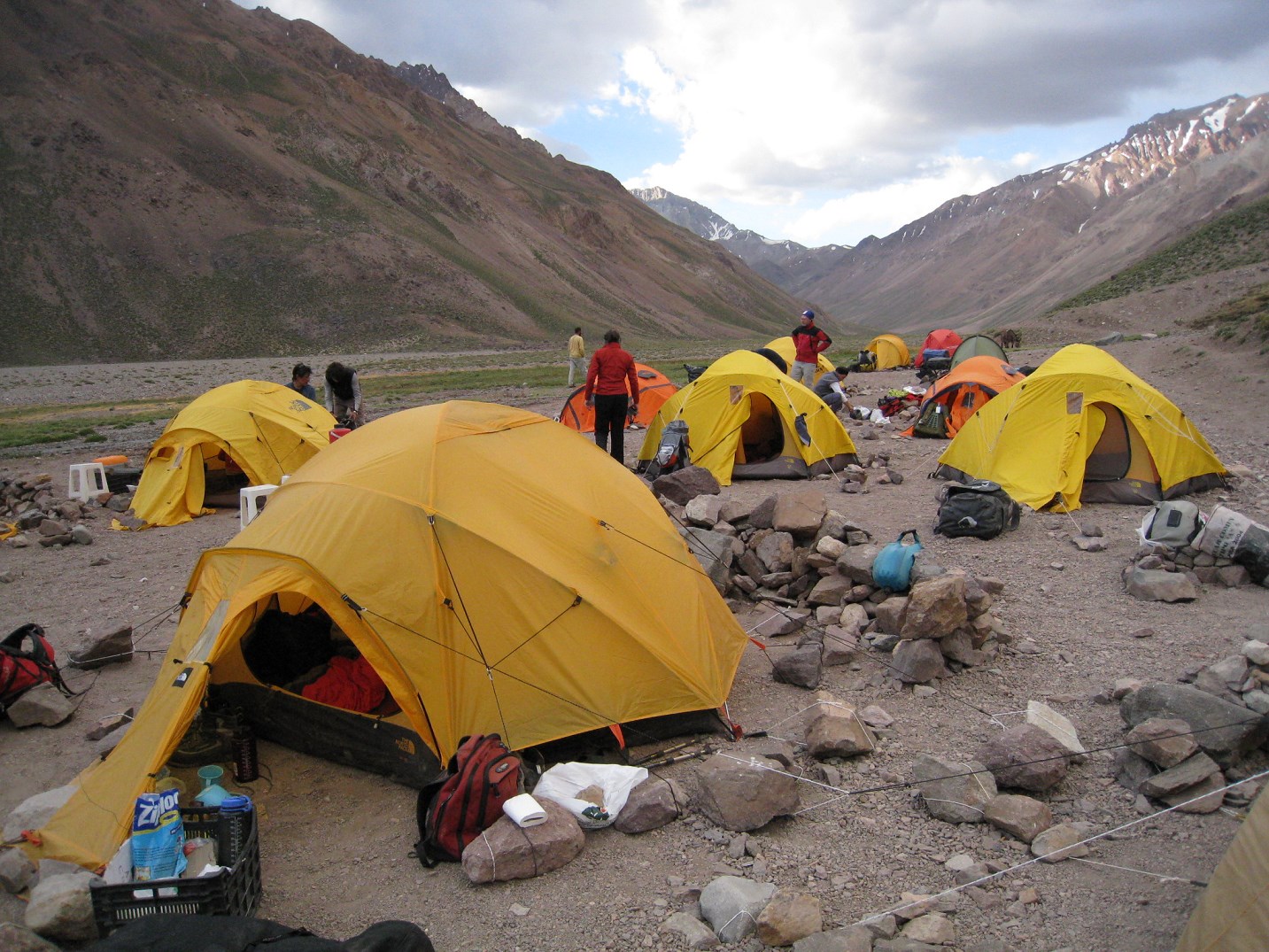
Aconcagua Rescues
RESCUES ON ACONCAGUA
There are excellent free medical facilities at the base camps with English-speaking doctors experienced in high altitude conditions and wilderness medicine. They have the authority to prevent people from climbing if they feel it is wise not to continue. If they deem it necessary a helicopter can be called to take a patient as far as the road ahead, and the cost of this is covered in the cost of the permit.
The National Park now requires every climber to receive at least two medicals before being allowed to go on the summit cycle. The first medical is on arrival at base camp, the second will be after a few days of acclimatisation and the third will be the day before you plan to head up for the summit cycle. They are very strict on this, and it is strongly advised to have a medical with your GP prior to this expedition, especially for high blood pressure which is a common reason for being prevented from climbing high.
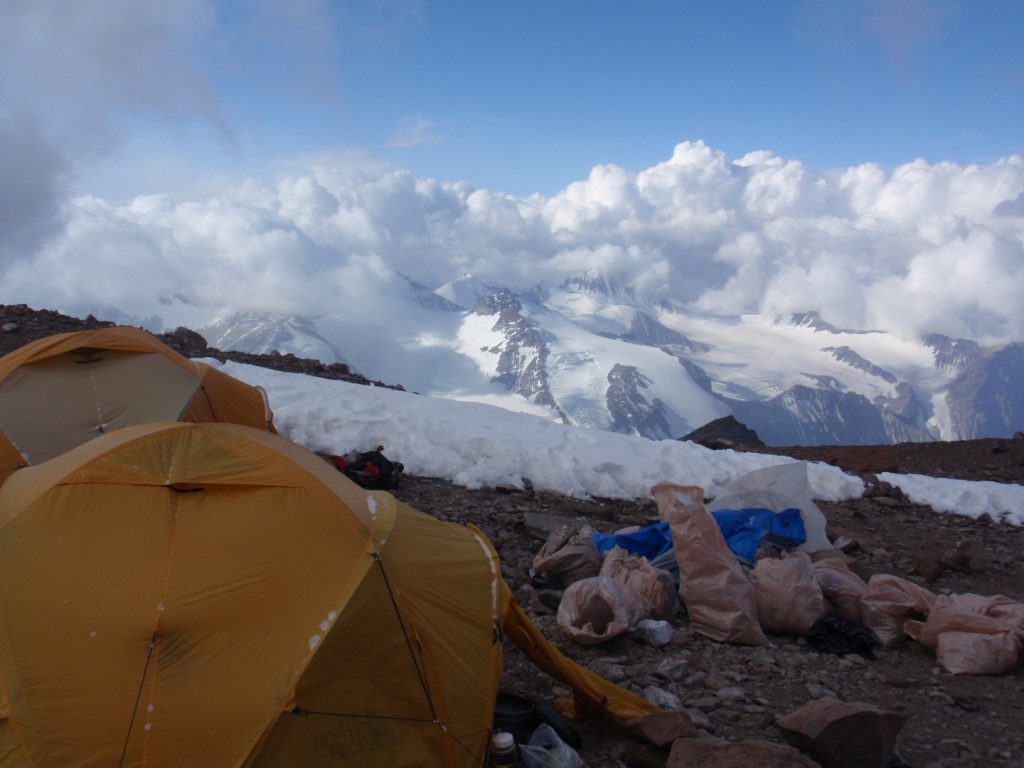
High on the mountain, any medical emergency must be handled by the group. Although there are Rangers at Nido de Condores, and generally other climbers around, the team has to be in a position to conduct its own rescue and evacuation, which means helping people down and carrying their kit. As obvious as it sounds, any medical emergency will take immediate precedence over any summit attempts.
The leader will carry a mountain first aid kit with us, but you will all be expected to carry a small personal kit.
There are now emergency facilities stationed at all the major points on the summit route which have been put in by the Campanini Foundation, in memory of an Argentinian guide known as El Fede who died in 2009 while attending to a rescue. This means that now you will see large barrels at Nido de Condores (also a Ranger Hut here, a rescue hut and a helipad, Independencia Hut and the base of the Canaleta which contain highly important and useful rescue and survival equipment.
Clearly this equipment has changed the face of climbing on Aconcagua, but the best cure is prevention so please make sure you are well equipped by following the equipment list carefully and that you carry a personal first aid kit of your own and that on the summit day you are fully aware of your situation, your group and the weather patterns.
EMERGENCY PROCEDURES ON ACONCAGUA
In the event of a rescue or an emergency, the guides will manage the situation on the ground along with any required external rescue teams, in this case, the Aconcagua National Park Rangers. All parties will then coordinate a rescue involving an assisted descent down the mountain. Serious accidents may involve the use of a stretcher but descents are generally quickly organised. The Rangers work alongside the medical staff which have well-serviced facilities at both base camps.
There is a helicopter rescue service which can go as high as Nido de Condores, but normally picks up casualties at base camp and takes them to park gate. This service is included in the cost of the park permit, and therefore you will not need to cover this cost with your insurance policy. From the park gate, you can go to the hotel in Puente del Inca and rest, or go straight to the hospital in Mendoza. Transport can be arranged through our local provider.
The guide will call the UK office and together we will ensure that the next of kin is notified and ensure that the insurance company is contacted as soon as possible so that a case number can be applied and the situation monitored by their Emergency Assistance Team. However, you should carry your insurance policy with you and have a credit card handy to pay for upfront costs, which can be claimed later.
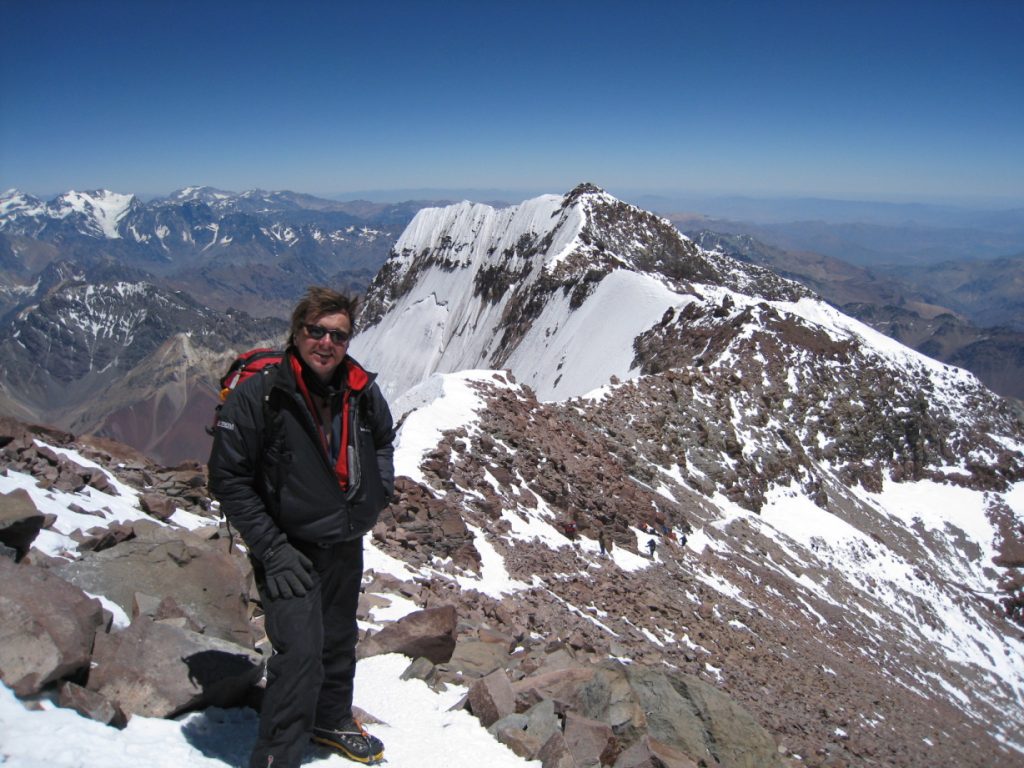
KNOWING WHEN TO GO DOWN AND RELYING ON THE GUIDES
Some people may not acclimatise well to altitude and for them, it is simply not worth continuing if it is likely to be injurious to your health. “The mountain is always there” may be a cliché, but it is true. With that being said, our acclimatisation program has proved very successful over the years on the mountain and few people have had to abandon their summit plans purely due to altitude. If you did have to go down, our guides are prepared to assist you. They also recognize when you are unable to make decisions for yourself and you are in good hands.
Our guides are trained in mountain safety. They have been climbing mountains for many years and know when someone is not up to summit.
We always recommend listening to your body. If you are truly struggling, it is ok to abandon the climb. No summit is worth your safety or a sour memory.
If you are feeling fine, don’t rush or go quicker than planned. Instead, enjoy a great day in the mountains.
NEAREST HOSPITAL TO ACONCAGUA
There are a number of public and private hospitals in the vicinity of Mendoza. Follow the recommendations of the doctors on the mountain.

River crossing near base camp can be treacherous. Take care to wear proper footwear and be prepared for the challenge ahead.
MEDICAL SUPPORT WHILE CLIMBING ACONCAGUA
During your climb, you will have to undergo two medical checks at Base Camp. You must complete both successfully before you are allowed to proceed. Arterial oxygen saturation, heart rate and blood pressure measurements will be taken. In addition, you will also be asked questions about long-term medical problems, as well as any altitude related symptoms that you may be suffering from at that time.
For those with a history of high blood pressure, it is important to have a plan formulated in case your reading is high. This may involve increasing the dose of your current medication or adding an additional drug to your normal regime. Speak to your doctor about this before you leave home.
Beware! Several individuals have been prevented from climbing the mountain as a result of high blood pressure.
Bring a spare set of medication with you in case of loss or damage.
(courtesy UIAA guidelines)
Book Your Adventure of a Lifetime Now
Discover our trips to other Countries
Adventure Alternative Articles
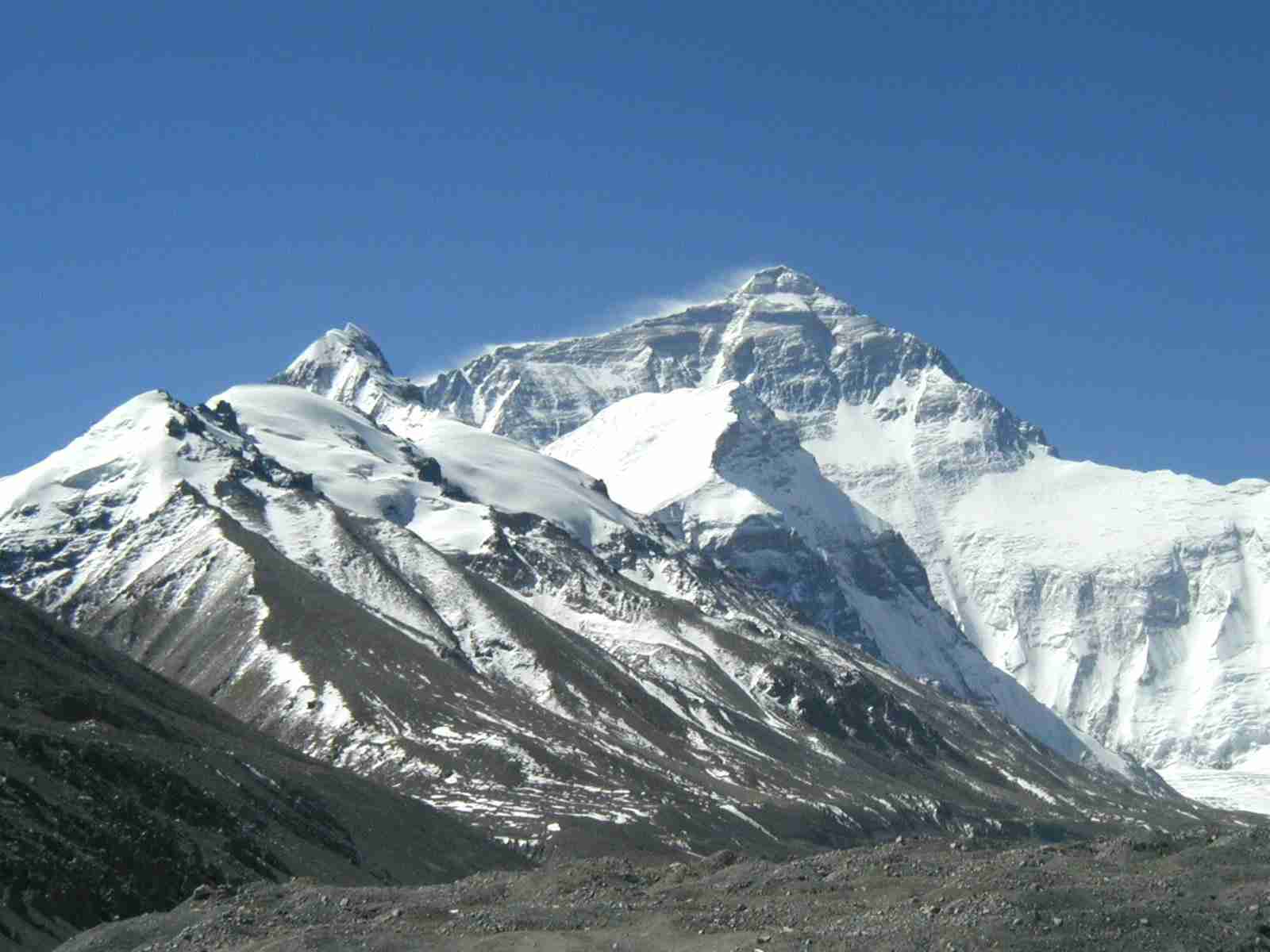
12 MONTHS, 12 MOUNTAINS
Climbing Calendar Ready for World Mountain Day In celebration of World Mountain Day, we've created a calendar for the year to make it easy for...
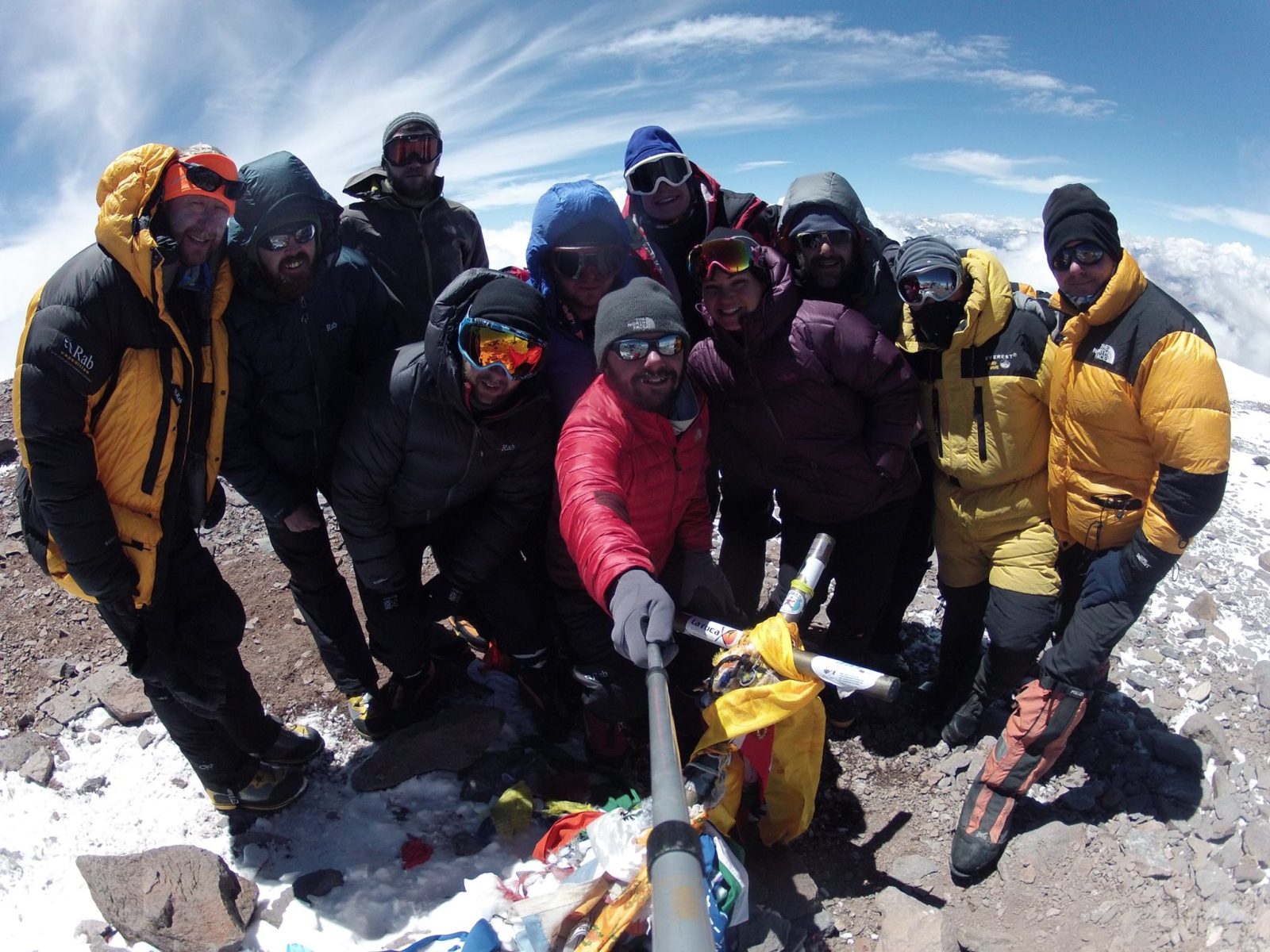
Mount Aconcagua Trip Review
January 2016 This year we had a team of twelve clients from four different countries – Iran, Ireland, England, South Africa and Argentina –...
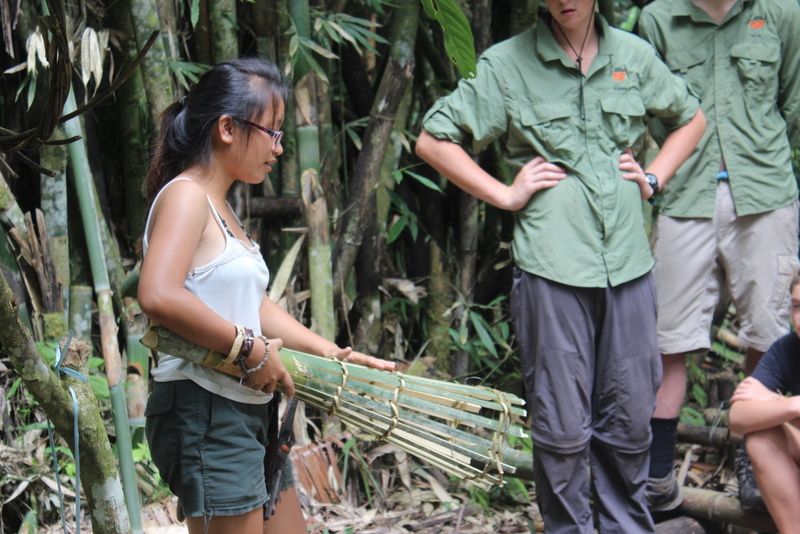
Alcey’s Survival Skills Course at Lupa Masa Jungle Camp
SURVIVAL SKILLS COURSE AT LUPA MASA JUNGLE CAMP | ADVENTURE ALTERNATIVE In celebration of International Rural Women’s Day, we’re talking...